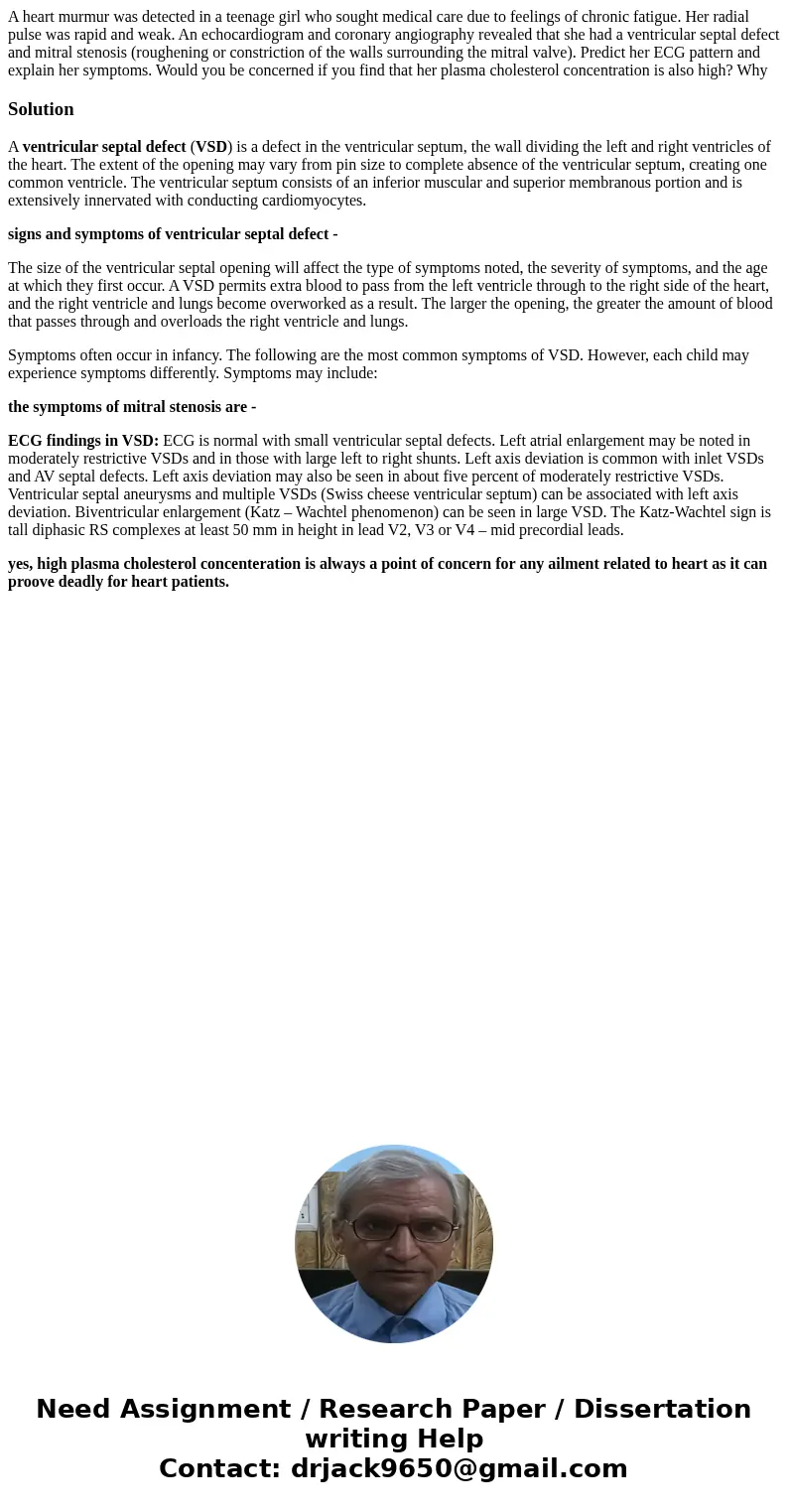A heart murmur was detected in a teenage girl who sought med
A heart murmur was detected in a teenage girl who sought medical care due to feelings of chronic fatigue. Her radial pulse was rapid and weak. An echocardiogram and coronary angiography revealed that she had a ventricular septal defect and mitral stenosis (roughening or constriction of the walls surrounding the mitral valve). Predict her ECG pattern and explain her symptoms. Would you be concerned if you find that her plasma cholesterol concentration is also high? Why
Solution
A ventricular septal defect (VSD) is a defect in the ventricular septum, the wall dividing the left and right ventricles of the heart. The extent of the opening may vary from pin size to complete absence of the ventricular septum, creating one common ventricle. The ventricular septum consists of an inferior muscular and superior membranous portion and is extensively innervated with conducting cardiomyocytes.
signs and symptoms of ventricular septal defect -
The size of the ventricular septal opening will affect the type of symptoms noted, the severity of symptoms, and the age at which they first occur. A VSD permits extra blood to pass from the left ventricle through to the right side of the heart, and the right ventricle and lungs become overworked as a result. The larger the opening, the greater the amount of blood that passes through and overloads the right ventricle and lungs.
Symptoms often occur in infancy. The following are the most common symptoms of VSD. However, each child may experience symptoms differently. Symptoms may include:
the symptoms of mitral stenosis are -
ECG findings in VSD: ECG is normal with small ventricular septal defects. Left atrial enlargement may be noted in moderately restrictive VSDs and in those with large left to right shunts. Left axis deviation is common with inlet VSDs and AV septal defects. Left axis deviation may also be seen in about five percent of moderately restrictive VSDs. Ventricular septal aneurysms and multiple VSDs (Swiss cheese ventricular septum) can be associated with left axis deviation. Biventricular enlargement (Katz – Wachtel phenomenon) can be seen in large VSD. The Katz-Wachtel sign is tall diphasic RS complexes at least 50 mm in height in lead V2, V3 or V4 – mid precordial leads.
yes, high plasma cholesterol concenteration is always a point of concern for any ailment related to heart as it can proove deadly for heart patients.

 Homework Sourse
Homework Sourse